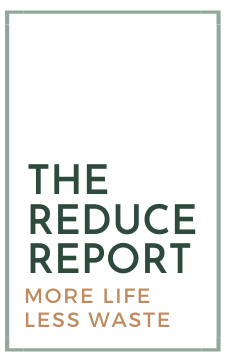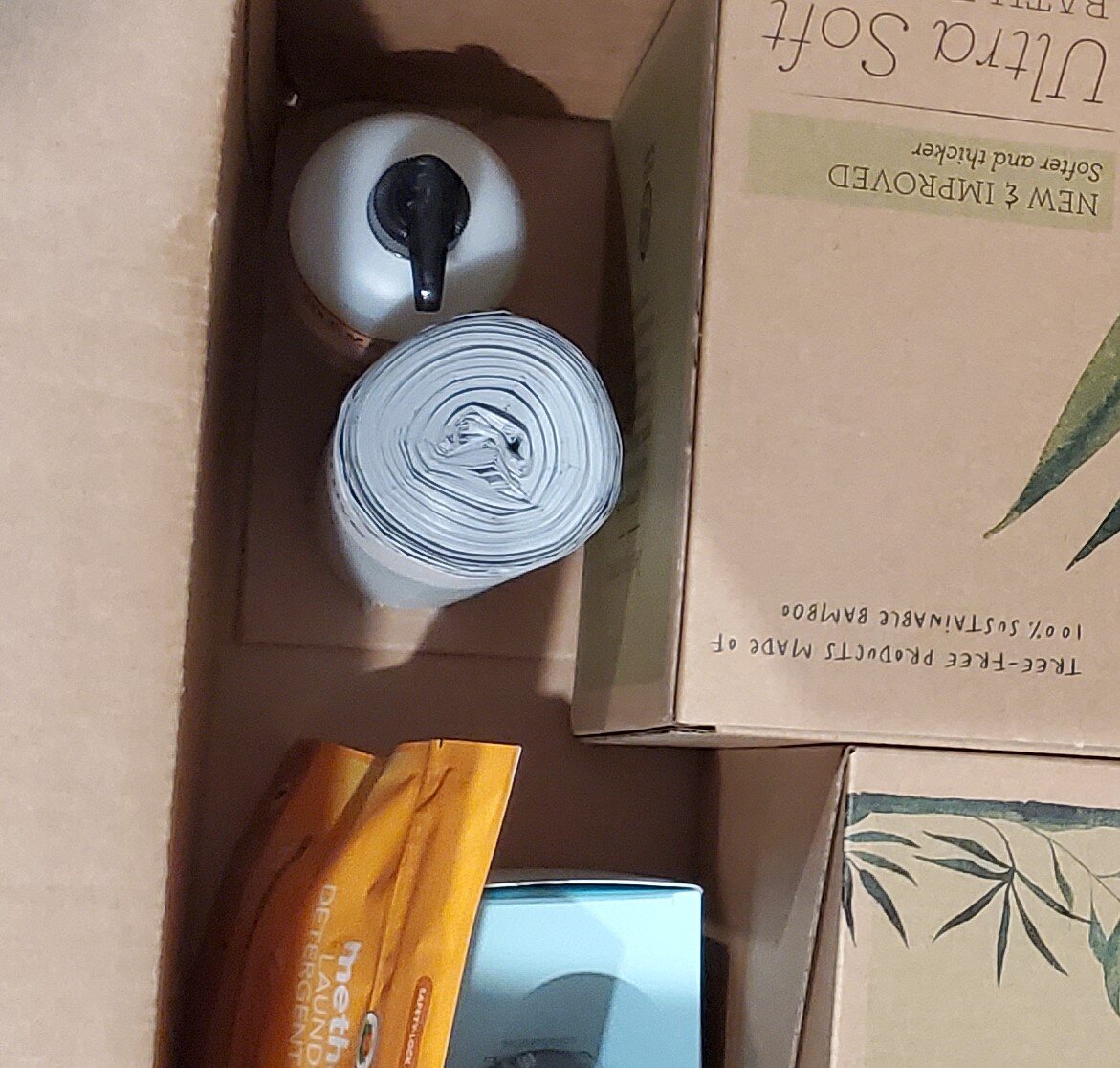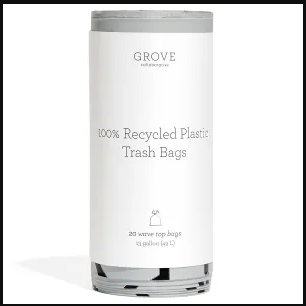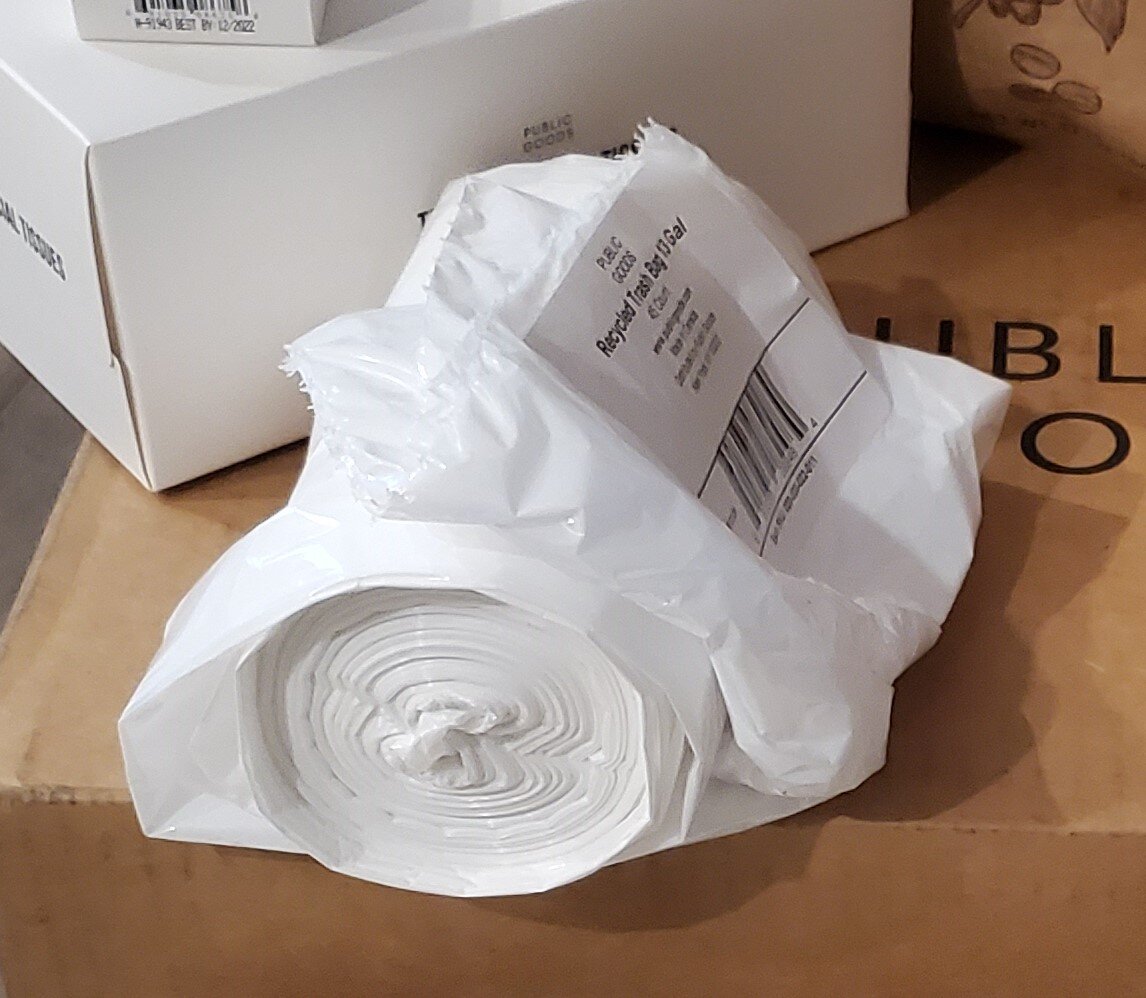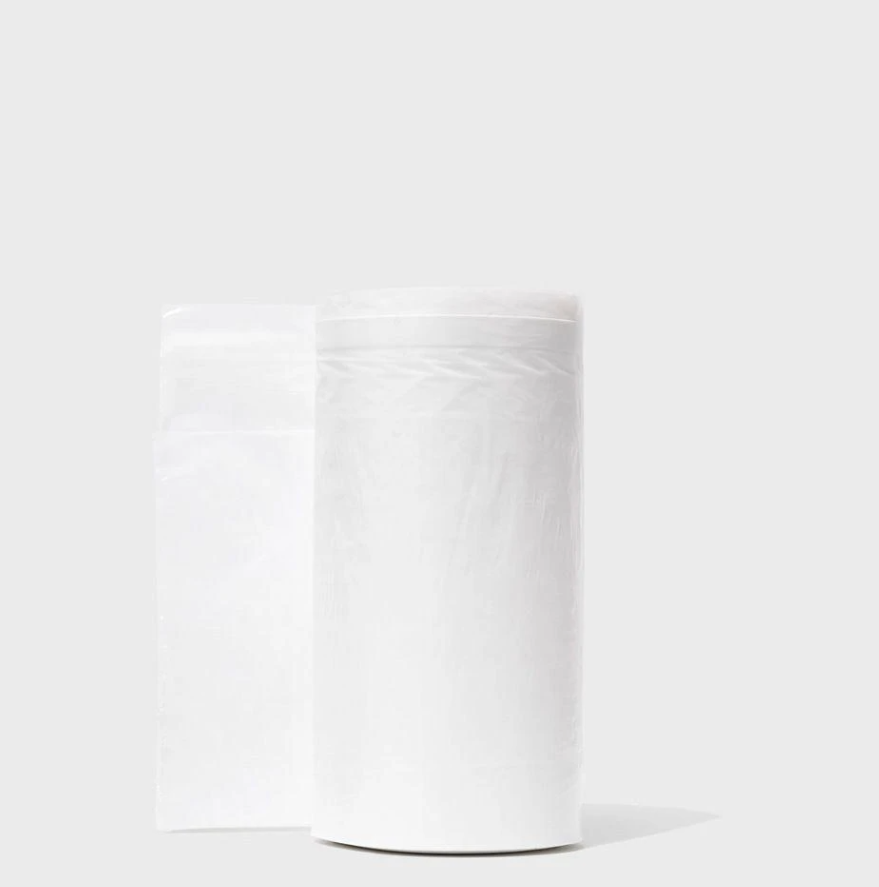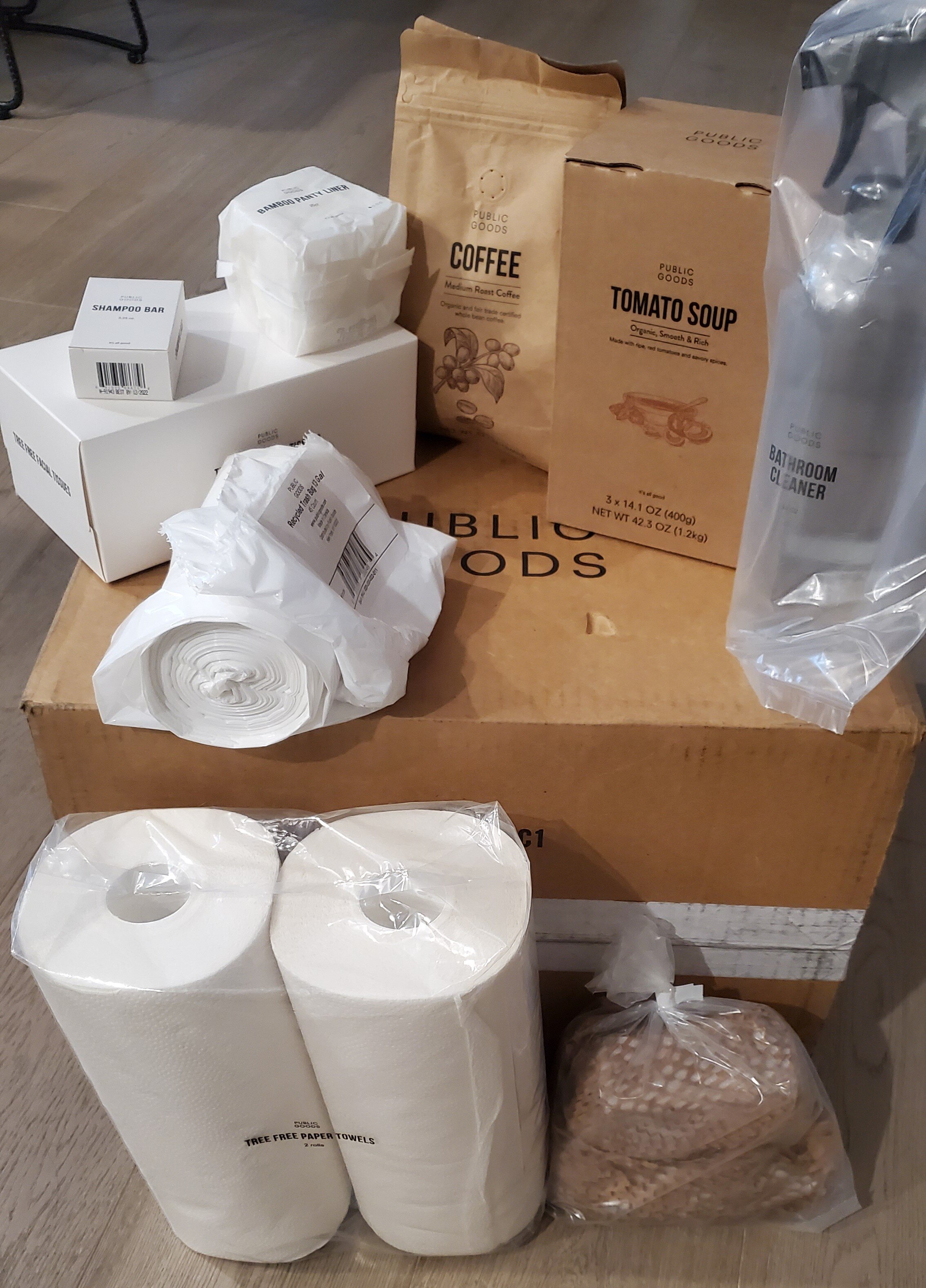Public Goods vs Grove Collaborative Garbage Bags Review 2020 | Recycled Plastic Garbage Bags
The Top Line:
Neither are really a buy for us.
Public Goods: these things rip constantly. What good is the degradation over 5 years (versus 1,000) if we have to double bag into another, tougher bag in the first place?
Grove Collaborative: Awesome bags (these don’t rip) but a little pricey to be green here (3x versus Public Good’s bags). However, if you are already shelling out for simplehuman, you should make the switch for cheaper, and greener into Grove Collaborative’s recycled garbage bags.
Note: we did a Public Goods Roundup Review here!
The Breakdown:
Cost & Products: Public Goods $4.50 for 45 bags and Grove Collaborative $5.95 for 20 bags
Grove Collaborative’s recycled trash bags has a drawstring option is available for the same price of $5.95.
How ‘Clean’ Is This? Both are made from 100% recycled plastic. Public Goods claims that their bags degrade in 5 years as opposed to 1000 years of typical bags.
Packaging: Public Goods just had a sticker on it (which was a little annoying to remove, so we didn’t) and Grove Collaborative had a paper cuff.
Purchasing & Shipping:
Public Goods The website is cleanly designed and ordering is a straightforward. The free shipping threshold seems a little on the high side at a minimum of $45. We get it though. Limited shipments = Lower carbon emissions.Grove Collaborative We have now ordered twice on the mobile site. The mobile site is so finicky that we ended up not ordering exactly what we wanted. The desktop site is a little better, but still not intuitive to navigate, since they have duplicate products listed.
Good to know: Grove Collaborative partnered with an organization to remove trash from the oceans for every 50 rolls trash bags sold.
What’s Your Impact? For one, 100% reused plastic is great. Two, if you use Public Goods, then the plastic breaks down a lot faster — in 5 years versus 1000.
The Experience
Now that we can’t line our trash cans with grocery shopping bags, we tried to find greener versions of existing trash bag options. Because normal trash bags are much thicker than shopping bags, the carbon footprint is much worse. Not to mention normal trash bags are one-time-use, unlike the shopping bag that at least gets 2 uses in its lifetime.
Testing these two brands was actually pretty straightforward…
The Public Goods trash bags rip all the time — we end up bagging them inside another trash bag. Pretty pointless. They were weaker than grocery bags!
Perforation is awful and annoying to use, as with the Public Goods Paper Towels.
Storage of Public Goods bags is also frustrating- they unroll all the time. We tried rubber bands and no dice.
Meanwhile….
Grove Collaborative trash bags work great! The perforation tears off nicely.
Grove Collaborative bags are strong and do not rip.
The Cost
We compared Public Goods an Grove Collaborative recycled trash bags to brands like If You Care and Seventh Generation, both recycled as well as traditional brands like Up&Up from Target, Glad, Hefty and Simple Human.
Money Report: Public Goods Bags are on the cheaper end of recycled trash bags. Meanwhile, Grove Collaborative is much pricier than traditional trash bags, and even a bit more expensive than Seventh Generation. If you’re a Simplehuman user, then moving to a cheaper and recycled form of trash bag like Grove Collaborative’s makes it easier on your wallet and better for the environment.
The Good:
✔ Cheap green option
✔ Decomposes in 5 years versus 1000 years
✔ 100% Recycled Plastic
The Bad:
✗ Tears super easily
✗ Generally pretty flimsy all around
The Good:
✔ Works really well, ie, doesn’t tear
✔ Cool grey color
✔ Commitment to cleaning up ocean with purchases
✔ 100% Recycled Plastic
The Bad:
✗ On the pricey side
Our Recommendation: Neither are really a buy for us. Grocery bags were “free,” were pretty strong, and had 2 uses out of them. Public Goods: what good is the degradation over 5 years (versus 1,000) if we have to double bag into another, tougher bag in the first place? Grove Collaborative: a little pricey to be green here. However, if you buy Simplehuman, make the switch for cheaper and greener into Grove Collaborative’s recycled garbage bags. Drawstring trash bag option here.
We're on a mission to reduce our personal carbon footprint with small, hopefully easy, changes in our home to fight against climate change. This means we're looking for products that may be all natural, ideally zero waste, reusable or compostable -- while still being affordable!

